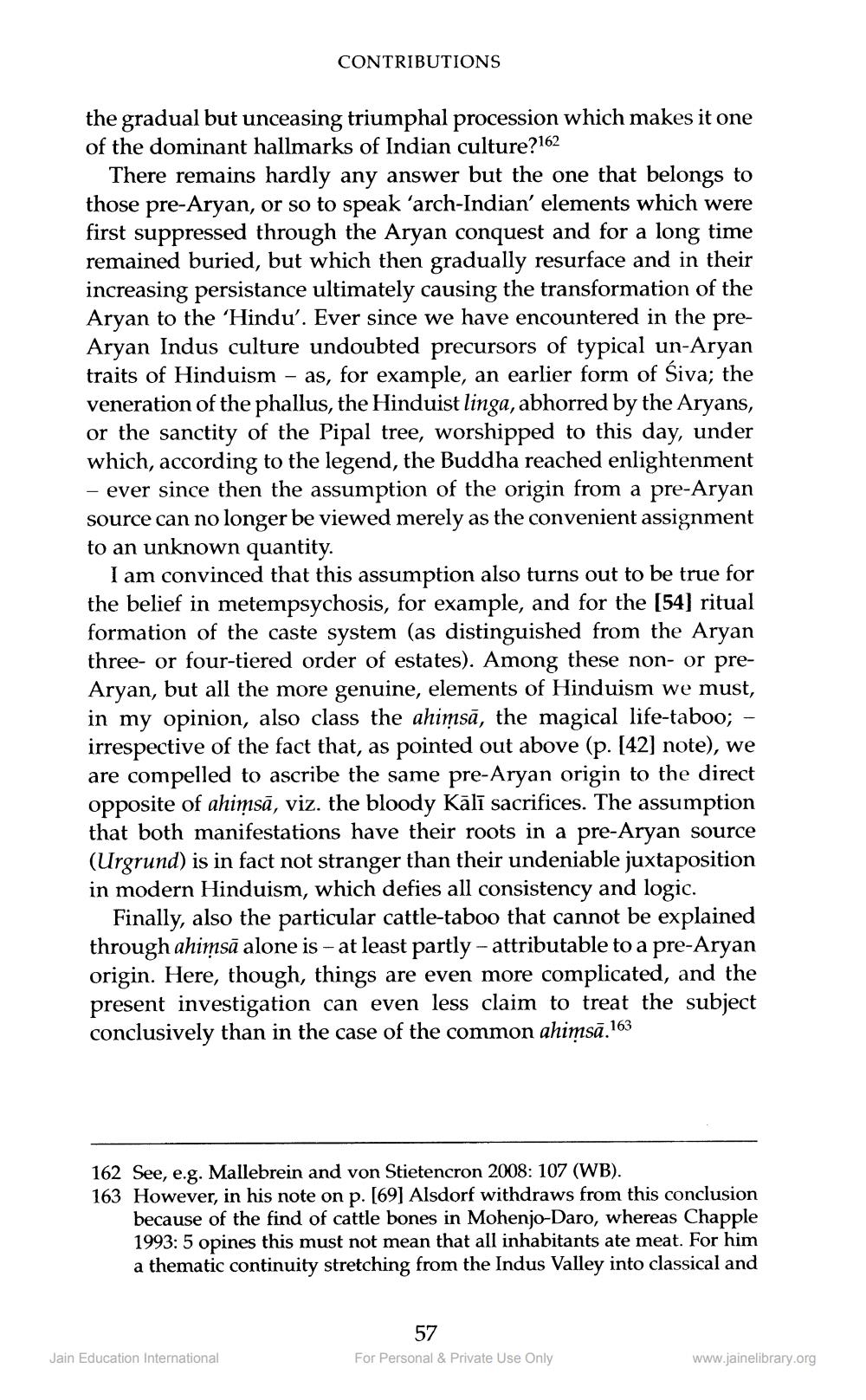________________
CONTRIBUTIONS
the gradual but unceasing triumphal procession which makes it one of the dominant hallmarks of Indian culture?162
There remains hardly any answer but the one that belongs to those pre-Aryan, or so to speak ‘arch-Indian' elements which were first suppressed through the Aryan conquest and for a long time remained buried, but which then gradually resurface and in their increasing persistance ultimately causing the transformation of the Aryan to the 'Hindu'. Ever since we have encountered in the preAryan Indus culture undoubted precursors of typical un-Aryan traits of Hinduism - as, for example, an earlier form of Siva; the veneration of the phallus, the Hinduist linga, abhorred by the Aryans, or the sanctity of the Pipal tree, worshipped to this day, under which, according to the legend, the Buddha reached enlightenment - ever since then the assumption of the origin from a pre-Aryan source can no longer be viewed merely as the convenient assignment to an unknown quantity.
I am convinced that this assumption also turns out to be true for the belief in metempsychosis, for example, and for the [54) ritual formation of the caste system (as distinguished from the Aryan three- or four-tiered order of estates). Among these non- or preAryan, but all the more genuine, elements of Hinduism we must, in my opinion, also class the ahiņsā, the magical life-taboo; - irrespective of the fact that, as pointed out above (p. [42] note), we are compelled to ascribe the same pre-Aryan origin to the direct opposite of ahimsā, viz. the bloody Kālī sacrifices. The assumption that both manifestations have their roots in a pre-Aryan source (Urgrund) is in fact not stranger than their undeniable juxtaposition in modern Hinduism, which defies all consistency and logic.
Finally, also the particular cattle-taboo that cannot be explained through ahimsā alone is - at least partly - attributable to a pre-Aryan origin. Here, though, things are even more complicated, and the present investigation can even less claim to treat the subject conclusively than in the case of the common ahimsā. 163
162 See, e.g. Mallebrein and von Stietencron 2008: 107 (WB). 163 However, in his note on p. [69] Alsdorf withdraws from this conclusion
because of the find of cattle bones in Mohenjo-Daro, whereas Chapple 1993: 5 opines this must not mean that all inhabitants ate meat. For him a thematic continuity stretching from the Indus Valley into classical and
57 For Personal & Private Use Only
Jain Education International
www.jainelibrary.org




